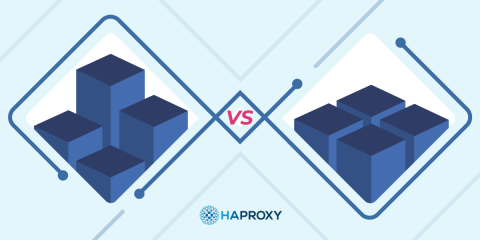
Containers have quickly become one of the most efficient ways of virtually deploying applications, offering more agility than a virtual machine (VM) can typically provide. Both containers and VMs are great tools for managing resources and application deployment, but what is the difference between the two, and how do we manage containers?
How Has Application Deployment Evolved?
Before the virtualization uptake, applications simply ran on a system and utilized the hardware as needed. The server would run the operating system (OS) and the applications only faced limitations from available resources, sometimes running without boundaries and unfairly accessing more resources than other applications. Some applications would perform well, while others were left with smaller portions of system hardware to run efficiently. Servers and applications were limited in this regard, offering unreliable and inconsistent service to clients. In order to combat this limitation, organizations adopted a “single application per server” mantra, a strategy that can be costly to implement. This not only meant that application deployment faced hardware limitations but also required considerable funding to ensure high performance.
Then came the age of virtualization. With a VM, a single hardware server is capable of running multiple virtual instances of machines. Each VM operates independently and has an allocated set of virtualized hardware. As far as the machine is concerned, it functions as its own system with its own set of components. A virtualized machine does not communicate with other VMs, and from the client side, it simply appears that their service is being delivered by a single, physical machine. When it comes to deploying applications in a VM, applications only operate within the resources designated for each machine. With these boundaries, applications are not unfairly utilizing a large portion of system resources, but instead, only the portion it is allowed to. This allows servers to more efficiently run applications without being overloaded.
Although VMs offer more flexibility and balance with application deployment, virtualizing an entire machine can still be fairly demanding. What if we could isolate the applications and processes? What if we could lighten the weight of virtualization, occurring instead at the OS level and virtualizing only what is essential in delivering services to clients? Containers can do just that.
Containers are virtualizations that occur on a more focused level. Containers have within them isolated applications with only the necessary components needed to deliver services to clients. While the applications share the same server, it appears that they have their own OS, much like how a VM appears to have its own hardware. Since the virtualization is happening at the OS level, these lightweight containers allow servers to run more efficiently, packing in more containers that require fewer resources than if you were virtualizing entire machines (although some applications are more suited to VMs than containers, such as those that require full isolation on the system for security purposes). Containers are generally less demanding, have an allocated set of resources, and can deliver frequent, faster application updates.
Making “Cloud Native” Possible
The level of abstraction that containers provide pushes the boundaries of deployment, rapidly expanding the services you can deliver, and in turn, opening the door for your business to take a cloud-native approach. This direction of application deployment enhances the scalability and agility that both containers and “cloud native” bring to the table. Running containers in a cloud environment means your business will be able to scale up and down more feasibly and reap the benefits that “cloud native” can bring to containerized applications.
Migrating to the cloud means businesses can fully realize the high availability of their containers, scale out deployments as demand grows in a cost-effective manner, and leverage integrated monitoring to detect and resolve application issues. This added agility and simplification to containerized applications means much of the burden is moved to the infrastructure team. Traffic routing, cybersecurity, and observation tools are critical considerations infrastructure teams need to keep in mind when planning to support the rapid growth of a cloud-native approach. HAProxy Technologies’ solutions address these considerations and make migration simple.
HAProxy Enterprise is able to integrate with container networks and service delivery tools, and in combining this integration with a cloud-based environment, five-nines of availability becomes less of a dream and more of a reality. With HAProxy Enterprise, you’re able to route external traffic directly into your clusters, enable better communication between services and web applications within the same network, and load balance your deployments in the cloud. This means that migrating platforms, delivering fixes, and implementing routing changes have little to no impact on the services you provide.
Sophisticated security features like the HAProxy Enterprise WAF, HAProxy Enterprise Bot Management Module, and advanced SSL/TLS are baked into HAProxy Enterprise to help protect your containers from malicious threats. Combining this multi-layered security suite with HAProxy Enterprise’s powerful observability makes it a great option for monitoring your containers in the cloud, providing all the features needed to track traffic, activity, and performance of your containers. With features that provide info about the front and back end of your environments, load balancer data and access logs, and real-time traffic reports, you’ll have peace of mind knowing your containers are in the cloud.
Read More:
Conclusion
Containers make virtually deploying applications more feasible, allowing your business to scale alongside market demands. Compounding the lightweight and agile nature of containers with a cloud environment will allow your business to rapidly deploy more containers and services than ever before. While the shift to becoming “cloud native” can feel intimidating, HAProxy’s technology can make the migration possible.
Learn more about how HAProxy provides the support you need for your containers with the HAProxy Enterprise Kubernetes Ingress Controller.
Subscribe to our blog. Get the latest release updates, tutorials, and deep-dives from HAProxy experts.



